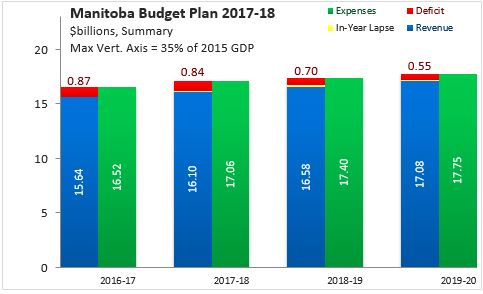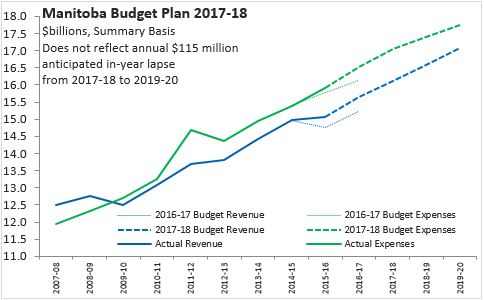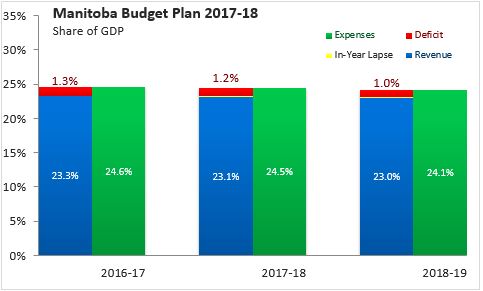The Economics and Statistics Division maintains archives of previous publications for accountability purposes, but makes no updates to keep these documents current with the latest data revisions from Statistics Canada. As a result, information in older documents may not be accurate. Please exercise caution when referring to older documents. For the latest information and historical data, please contact the individual listed to the right.
<--- Return to Archive
For additional information relating to this article, please contact:
April 12, 2017MANITOBA BUDGET 2017-18 The Province of Manitoba has released its 2017-18 Budget. After a projected deficit of $872 million in 2016-17, the government of Manitoba anticipates a deficit of $840 million in 2017-18, followed by deficits of $698 million in 2018-19 and $549 million in 2019-20. Although there is no projected return to balance, the government of Manitoba has indicated that it expects to return to balance within a second mandate.
The Manitoba Budget projections assume "year-end adjustments/lapse", which are unanticipated revenue increases or expenditure reductions of $115 million in each of the next three fiscal years.

In 2016-17, Mantioba's revenues are now projected to be $168 million stronger than the Budget estimate while expenditures are $21 million lower. This exceed's the 2016-17 in-year adjustment/lapse estimate of $150 million. For 2017-18, revenues are projected to increase by 2.9 per cent and to 3.0 per cent over the remainder of the planning horizon. Expenditure growth is planned at 3.3 per cent for 2017-18, but spending growth is projected to slow to 2.0 per cent in the following two fiscal years.

The Manitoba Budget makes few changes to either revenue or expenditure policy. As a result, the footprint of the Manitoba government in the economy (measured as a share of projected nominal GDP) is stable, with revenues between 23.0 and 23.3 per cent of GDP, expenditures between 24.1 and 24.6 per cent of GDP and deficits of 1.0-1.3 per cent of GDP. In-year adjustment/lapse amounts to 0.2 per cent of GDP in 2017-18 and 2018-19.

Manitoba has a diversified economy with stable growth in nominal and real GDP. However, the Manitoba economic outlook is increasingly influenced by global economic events as the province increases its trade linkages. Manitoba's economic outlook has been reduced compared with last year's projections and economic growth is expected to be slower than trend in the short run.

Key Measures and Initiatives
The Manitoba Budget makes limited changes to expenditure and tax measures.
- Tax credits for manufacturing investment, mineral exploration, book publishing and interactive digital media are all extended.
- The tuition fee income tax rebate will be phased out in 2017, with full elimination in the 2018 tax year.
- There will be a cap on amounts paid under the primary caregiver tax credit.
- The maximum eligible amounts for the political contributions tax credit will be increased effective 2018.
- The research and development tax credit will be reduced from 20 to 15 per cent of eligible expenditures.
- The non-refundable potion of the manufacturing investment tax credit is reduced from 2 per cent to 1 per cent; the 8 per cent refundable portion of the credit is unchanged.
- Several smaller tax credits are eliminated: co-operative development, odour control, nutrient management, riparian, neighbourhoods alive, data processing investment,
Manitoba Budget 2017-18
<--- Return to Archive